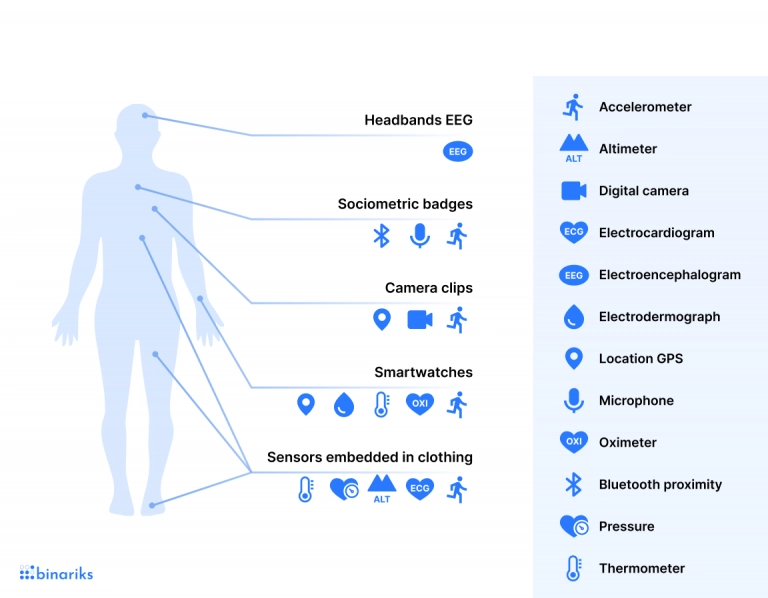The Future of Healthcare: Remote Client Checking Streamlined
As health care proceeds to advance, one location that holds immense pledge is remote client tracking. The principle of streamlining this procedure with technological advancements is reshaping the method treatment is supplied and obtained. With a focus on boosting patient results and enhancing health care distribution, remote surveillance is poised to change the sector. By discovering the advantages, technical developments, and future fads in this field, we can obtain beneficial understandings right into the transformative possibility of remote patient monitoring.
Advantages of Remote Person Surveillance
Remote individual monitoring presents a multitude of advantages for both health care companies and patients alike. Furthermore, remote person surveillance boosts the overall quality of care by giving an extra all natural and comprehensive sight of people' wellness condition beyond conventional in-person brows through.
Furthermore, remote person surveillance can lead to improved client results and contentment. Remote monitoring can minimize the demand for frequent hospital sees, reducing health care prices for both providers and clients.
Technology Driving Remote Tracking
In the world of modern healthcare, technological advancements play an essential function in driving the advancement and performance of remote patient tracking. The integration of ingenious technologies such as wearable tools, mobile applications, and cloud-based systems has changed the way healthcare suppliers remotely manage and check person wellness - remote patient monitoring software. These technologies make it possible for continuous real-time surveillance of important signs, medicine adherence, and various other important health and wellness information, permitting for timely treatments and customized care strategies
One key modern technology driving remote tracking is the Web of Points (IoT), which enables smooth connection in between medical devices and healthcare systems. IoT tools such as smartwatches and cordless sensing units collect and transmit patient information to central systems, helping with remote tracking from throughout the globe. Artificial intelligence (AI) and artificial intelligence algorithms further enhance remote surveillance by evaluating substantial amounts of individual data to identify patterns, forecast health trends, and alert healthcare suppliers to possible problems.
Influence On Health Care Shipment
With the assimilation of innovative technologies driving remote individual monitoring, the effect on medical care distribution is becoming transformative and significantly extensive. Remote individual surveillance enables medical care suppliers to offer even more personalized and proactive treatment to people, resulting in boosted wellness end results and reduced medical facility admissions. By remotely tracking essential indications, symptoms, and medicine adherence, healthcare experts can interfere early, stopping problems and improving the total top quality of treatment.
Furthermore, remote tracking boosts access to medical care solutions, particularly for people in country or underserved areas. People can obtain continuous surveillance and assistance from their homes, eliminating the requirement for regular in-person sees. This not only saves time and reduces prices for both individuals and healthcare facilities but additionally reduces the threat of exposure to transmittable diseases, a critical consideration in the current healthcare landscape.
In addition, remote person surveillance allows doctor to far better assign resources and focus on treatment based on real-time information. By recognizing high-risk clients and intervening immediately, healthcare delivery ends up being a lot more effective and find here efficient, inevitably leading to an extra lasting and patient-centered medical care system.
Improving Patient Results

In addition, RPM permits aggressive monitoring of chronic problems, minimizing the probability of acute worsenings and hospital readmissions. Clients take advantage of enhanced comfort and convenience, as they can receive care in their own homes while staying linked to their health care carriers. This continuous surveillance not just boosts person contentment but also fosters a feeling of empowerment and involvement in their own wellness management.
Future Trends in Remote Monitoring
Welcoming advanced innovations in remote client monitoring is forming the future landscape of healthcare shipment. One significant pattern is the boosted use of wearable devices and sensing units to gather real-time data, allowing Resources healthcare carriers to keep track of patients continuously without the requirement for frequent in-person sees.

Furthermore, telehealth platforms are coming to be much more innovative, enabling digital consultations, remote medical diagnosis, and remote person keeping track of all in one incorporated system (remote patient monitoring platform). This all natural technique to remote surveillance is improving health care delivery, enhancing person satisfaction, and ultimately, enhancing overall top quality of care
Conclusion
To conclude, remote patient tracking uses countless advantages in health care delivery, driven by advancements in innovation. It has the potential to enhance client results and change the method medical care is provided. Future fads in remote monitoring will certainly remain to form the landscape of health care, giving possibilities for even more effective and personalized person treatment.
Remote person surveillance presents a multitude of benefits for both medical care carriers and patients alike. Furthermore, remote client monitoring enhances click for source the general top quality of treatment by giving a more alternative and extensive view of clients' health and wellness condition beyond traditional in-person brows through.
In addition, remote client surveillance can lead to enhanced person end results and contentment. Remote person tracking permits medical care suppliers to provide even more proactive and tailored treatment to clients, leading to improved health results and lowered healthcare facility admissions. Remote person surveillance (RPM) plays a significant role in enhancing individual results by supplying continual, real-time data that makes it possible for healthcare companies to intervene without delay and readjust treatment plans as required.